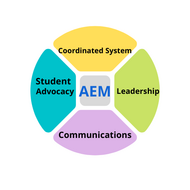
(View Complete Item Description)
This document is a revised version of a document originally developed by the Chicago Office of the Office for Civil Rights (OCR) in the U.S. Department of Education (ED) to clarify the requirements of Section 504 of the Rehabilitation Act of 1973, as amended (Section 504) in the area of public elementary and secondary education. The primary purpose of these revisions is to incorporate information about the Americans with Disabilities Act Amendments Act of 2008 (Amendments Act), effective January 1, 2009, which amended the Americans with Disabilities Act of 1990 (ADA) and included a conforming amendment to the Rehabilitation Act of 1973 that affects the meaning of disability in Section 504. The Amendments Act broadens the interpretation of disability. The Amendments Act does not require ED to amend its Section 504 regulations. ED’s Section 504 regulations as currently written are valid and OCR is enforcing them consistent with the Amendments Act. In addition, OCR is currently evaluating the impact of the Amendments Act on OCR’s enforcement responsibilities under Section 504 and Title II of the ADA, including whether any changes in regulations, guidance, or other publications are appropriate. The revisions to this Frequently Asked Questions document do not address the effects, if any, on Section 504 and Title II of the amendments to the regulations implementing the Individuals with Disabilities Education Act (IDEA) that were published in the Federal Register at 73 Fed. Reg. 73006 (December 1, 2008).
Material Type:
Primary Source
Author:
U.S. Department of Education















